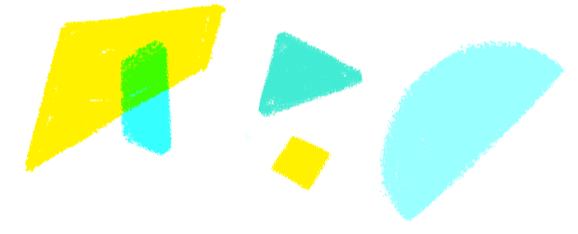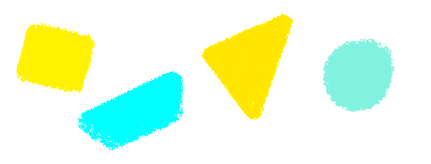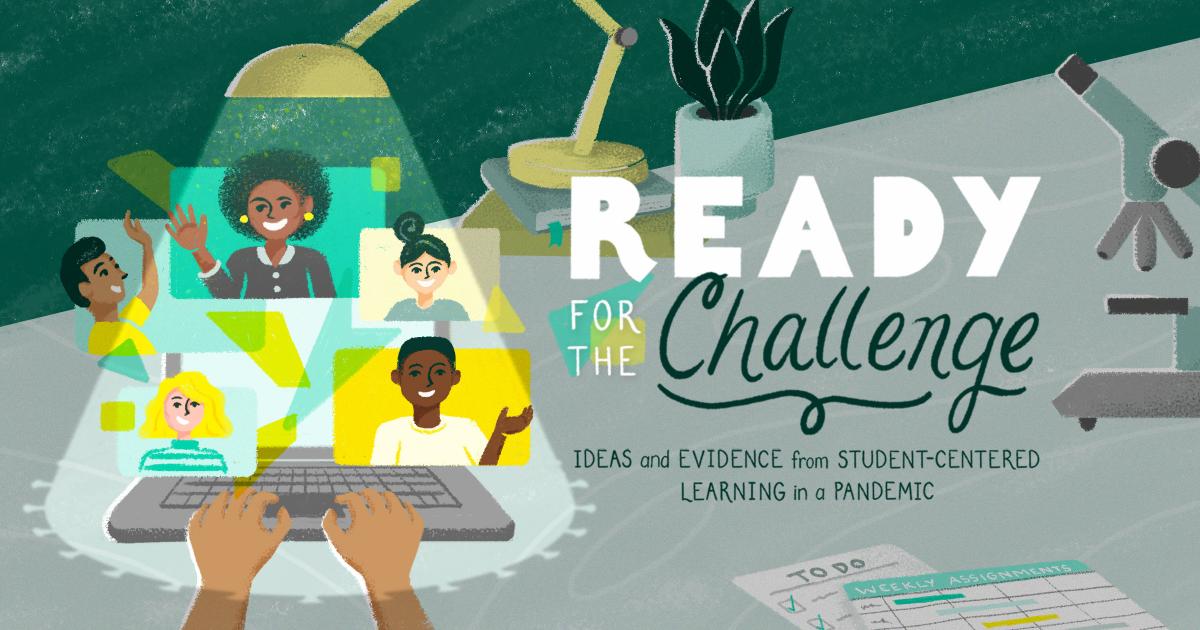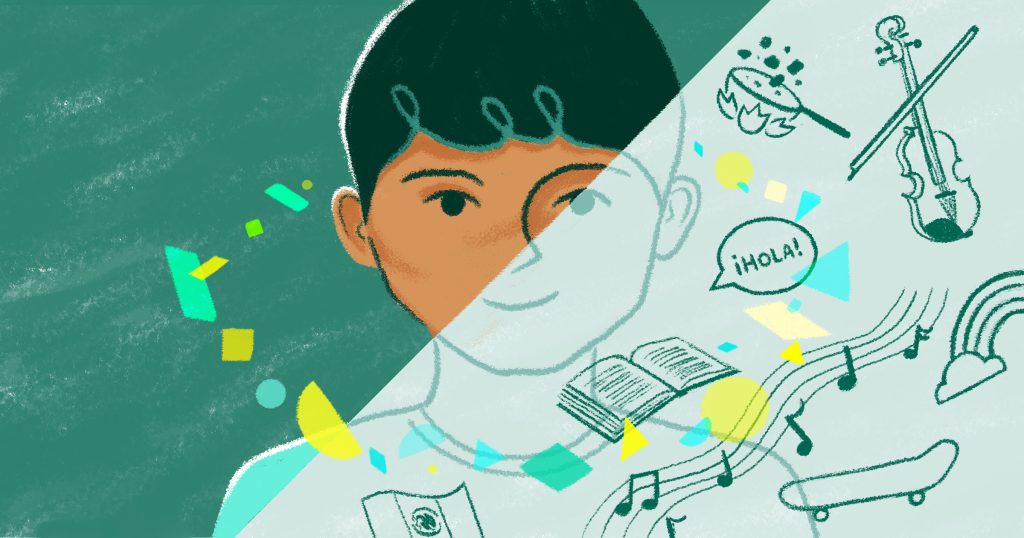This post is part of a larger blog series this year, looking at how schools have used student-centered strategies to respond to the pandemic. This includes both learning designs, but also the success indicators schools use to know whether they are successful. Here, we go in depth on one category of indicator: qualitative evidence of learning.
More is better. It’s a value so deeply embedded in American society that we rarely question efforts to “raise test scores” and “increase achievement” at the expense of other, less measurable educational goals.
Given the multitude of variables that influence the intellectual, emotional, and spiritual development of a human child, it is practically impossible to reduce such a complex process to a test score or GPA. And yet, education policy and mechanisms for school accountability regularly do just that. Understandably so—how else could we easily summarize the learning experiences of thousands of kids?
The schools we partnered with for this series deeply understand the inherent challenge of measuring student learning, especially during a pandemic. And while they do use quantitative, standardized approaches to gauge learners’ success in specific, measurable domains, they have also found innovative ways to capture and celebrate the more immeasurable aspects of students’ learning.
Here, we’ve chosen to highlight two partner schools’ approaches to monitoring and collecting qualitative evidence of learning during the pandemic: documenting the project process at Crosstown High, and chronicling the lived experiences of students at UCLA Community School.

Documenting the process of learning at a project-based school
Project-based learning (PBL) was common among the student-centered schools we partnered with because of its appeal to learners, its real-world applications, and its customizability to the needs of the student—features that also make it notoriously difficult to assess.
Recognizing this particular limitation of PBL, Crosstown High leaders hired a “Project Curator” who would help to shape projects into meaningful learning experiences. We were fortunate to interview Danielle Tyler—whose role was part museum curator, part project guide, and part systems engineer—last spring.
At first Danielle’s work centered on storing and displaying students’ work. But she soon came to realize that students’ final products often failed to reflect the learning that had taken place throughout a project’s development. Take a flashy poster made from the Crosstown design lab’s large format printer: “I feel like those would be really reductive things,” Tyler told us. “They were able to print, and so they were able to hold this huge piece of paper, and it feels like they did a lot, but the content would really be lacking… You spent an entire semester on this work, but now you only have a poster with four bullet points?”
—Albert Einstein
She started creating tools and structures both to facilitate iterative, design thinking (one of Crosstown’s core competencies) and to help students see and appreciate the learning process by showcasing projects at every stage. She organized the school’s first ever “Prototype Fair” (highlighted in a previous post) which gave students an opportunity to share their works-in-progress with peers and staff members for feedback and inspiration.
We asked Tyler how she gauged the success of projects at Crosstown. While different content area teachers used different rubrics to grade projects, Tyler felt a good project should “speak for itself”: it should reflect intentional choices surrounding its form, the selection of materials, steps taken, and changes made. “With the Prototype Fair it was really about, ‘Can you tell me a story with this?’” Students submitted surveys about their projects that allowed them to justify those decisions, and also to indicate what resources or guidance they still needed.
In a way, the limitations on materials access posed by the pandemic helped Tyler to clarify for herself and for her students what made a successful project. It wasn’t a flashy poster or 3D model printed in the design lab, per se, it was a compelling story that connected the dots between what students had learned and how their design choices evolved. The results do speak for themselves, as evidenced by the learning on display at the virtual Crosstown High Project Gallery.

Celebrating learning through self-discovery
Like learning to implement the steps in the design process, learning about the self—understanding one’s strengths, identities, cultural assets, and greatest needs—is a worthy goal at face value, but one that lacks an obvious barometer.
This didn’t stop the team at UCLA Community School in Los Angeles from actively pursuing it. Conversely, as tests were cancelled and curricular plans upended due to the pandemic, the staff began to question the validity of traditional assessments and to prioritize capturing the significant self-discovery the pandemic had engendered among students. “None of the standardized measures truly capture all of the learning that’s occurred,” we heard from Rebekah Kang, a coordinator at the school.
A leadership team meeting discussion led to the development of the “Counter-Narrative Project”—introduced in a previous post—an initiative intended to capture student learning during what others were calling a “lost year.” The team sought to challenge the dominant narrative and present an alternative perspective on the year’s successes that they, and their students, co-constructed.
Staff members collected examples of student work that exemplified the kinds of learning students had experienced, much of which centered around knowledge and understanding of the self. Student self-portraits and family histories revealed growth in students’ sense of self and community. Student-created websites exhibited skills in HTML coding and self-expression. Student autobiografía demonstrated self-reflection and progress toward mastery of the Spanish language.
Meanwhile, students on the Student Advisory Board were empowered with the tools of social science—including both quantitative and qualitative research methodologies—to gather and analyze their classmates’ experiences. Six UCLA-CS students wrote an outstanding summary of their findings published by EdSource last spring. The student authors concluded:
This year has been far from ideal, but it has not been lost. We have learned so much about ourselves and our school community. We have learned that our voices matter and that we have the power to gather information, communicate it and make things better — for us and the entire school. These are lessons that will stay with us for life.
As a school with predominantly low income students of color, this counter-narrative served as a powerful testament to the resilience, collective power, and optimism of UCLA-CS students in the face of the prevailing deficit-oriented rhetoric.

Conclusion
When the dominant, numbers-centric narrative depicts brown and Black youth as consistently “underperforming,” we not only run the risk of undermining minoritized students’ academic self-efficacy, but we also struggle to see, acknowledge, or nurture their many strengths. Such is the danger of valuing quantity over quality (see Tema Okun’s work on white supremacy culture).
Making progress toward educational equity does require us to understand and track measurable student outcomes like reading ability and high school graduation. Numbers do provide powerful and compelling evidence that resources and opportunities are inequitably distributed.
But educational progress also requires us to pay attention to the processes and products of schooling that are less easily quantified.
The student-centered schools we learned from recognized the limitations of scores, percentiles, and other numerical data—especially during a global crisis—which often belied the powerful learning experiences students could access as distance learners. The educators we spoke with found creative and unconventional ways to document and celebrate learning that couldn’t easily be measured. Stories, anecdotes, images, and other qualitative forms of data allowed them to “assess” learning more holistically, and serve as powerful examples of evidence of student-centered learning.

About This Series
This blog post is part of a larger series exploring the practices and success indicators used for student-centered learning in a pandemic—and beyond. We are grateful to the Leon Lowenstein Foundation for their generous support for this series.
Read More & See Other Posts
